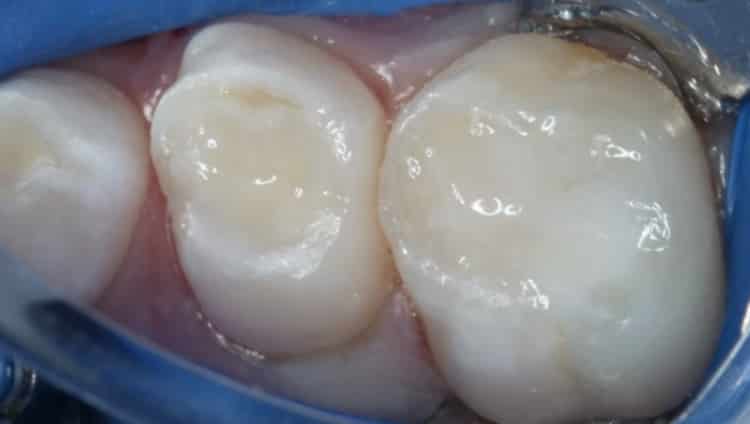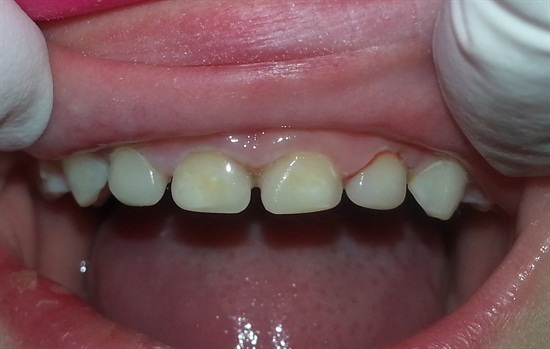By: Dr. Jack Griffin
The patient presented with interproximal decay between the bicuspid and molar (Figure 1) and needed Class II restorations on both teeth.

Using an Isolite system to ensure proper isolation, I placed wedges before drilling. This technique creates pressure on the PDL, helping to protect the gingiva while also making it easier to place a sectional matrix. I placed a caries indicator to make decay removal more efficient by staining debris, denatured collagen, decalcification, and decay.

Afterwards I removed the pre-operative wedges, placed a sectional matrix and a separating ring (Figure 2). A total etch with 37% phosphoric acid was done for 15 seconds, rinsed thoroughly and a universal bonding agent placed predominantly on the enamel. The restoration was bulk filled using ACTIVA BioACTIVE-RESTORATIVE (Figure 3) and then light cured from the lingual, buccal and then occlusal sides.

After curing, I removed the matrix materials and contoured the restoration with a round bur, light pressure, and water. The occlusion was checked and adjusted before smoothing and polishing the moist tooth with a rubber composite polishing cup. The final restoration meets the aesthetic demands of the patient while providing the ionic exchange to combat long-term restoration failure.


About Dr. Jack D Griffin
Dr. Jack D Griffin is one of the most honored and awarded dentists in the country. Jack is one of a hand-full of dentists awarded by his peers Diplomat status with the American Board of Aesthetic Dentistry (ABAD), accreditation with the American Academy of Cosmetic Dentistry (AACD), and Mastership in the Academy of General Dentistry (AGD). Jack graduated dental school from Southern Illinois University, where he received student dentistry awards and then went on to complete a general dentistry residency at the University of Louisville in Kentucky, with an emphasis in advanced dental care in restorative dentistry, emergency care, implants, oral surgery, and special patient care. Dr. Griffin began his dental practice in Eureka in 1988.




